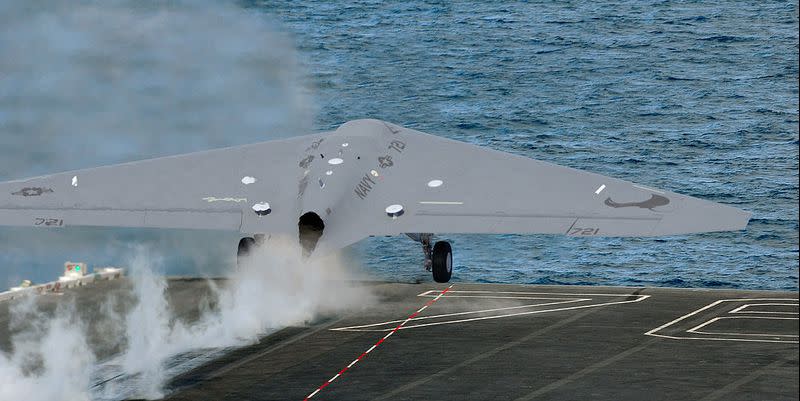Skunk Works Proposes Stealthy, Robotic Tankers for the Air Force

Lockheed Martin's Advanced Development Programs division, also known as Skunk Works, is proposing a stealth tanker for the U.S. Air Force capable of flying over defended airspace and passing gas to friendly aircraft. The so-called “KC-Z” would allow short-ranged U.S. fighters like the F-35 the ability to fly farther, penetrating deeper into enemy airspace to hold more targets at risk.
Lockheed Martin, which lost the Navy's MQ-25 Stingray unmanned carrier refueling contract to Boeing, appears to be pitching its entry for the Stingray program for the U.S. Air Force’s KC-Z refueling tanker. The Air Force is in the process of replacing aging KC-10 and ancient, 1950s-era KC-135 tanker transports. The new Boeing KC-46 Pegasus will make up a large proportion of the fleet, but the service is looking for another tanker, KC-Z, in the 2030-2035 timeframe.
The KC-46 is a tanker based on the Boeing 767 jetliner, and as such is not a stealthy aircraft. Tankers tend to operate fairly far behind friend lines, so until now stealth hasn’t been a must-have. As China and Russia have grown increasingly aggressive, the Air Force now envisions flying long distances across Asia and the Pacific and European Russia, into airspace defended by enemy fighters and surface-to-air missiles.
In 2016, Air Force General Carlton Everhart, head of Air Mobility Command, said KC-Z “might be a smallish unmanned autonomous vehicle that could penetrate an anti-access, area-denial system along with F-35s and other stealth combat aircraft.” Several contractors including Boeing, Lockheed Martin, and General Atomics were working on exactly that-the U.S. Navy's MQ-25 unmanned carrier-based tanker.
The Skunk Works envisions KC-Z as a MQ-25 with greater range and better stealth, taking on fuel from KC-46 tankers and accompanying friendly aircraft into hostile airspace. Intriguingly, the famed aircraft design group says it has an “unconventional” aerial refueling scheme in mind that “preserves the aircraft’s stealthy profile.”
Skunk Works proposed a blended wing-body aircraft for KC-Z in 2016, offering different aircraft designs while the service mulls its options. A blended wing-body design would develop a new airframe that could be useful for a variety of missions, including transport, airborne early warning and intelligence gathering, but it would likely be expensive. The Air Force is currently trying to push a twenty four percent increase in the number of operational squadrons while spending money on the F-35 strike fighter, the Penetrating Counter Air Fighter, the KC-46 tanker, T-X jet trainer, B-21 Raider bomber, and Ground-Based Strategic Deterrent intercontinental missile.
A smaller, stealthy, autonomous aircraft, leveraging MQ-25 research and development, could be a more cost-effective way of delivering gas behind enemy lines.
Source: Aviation Week & Space Technology
('You Might Also Like',)

